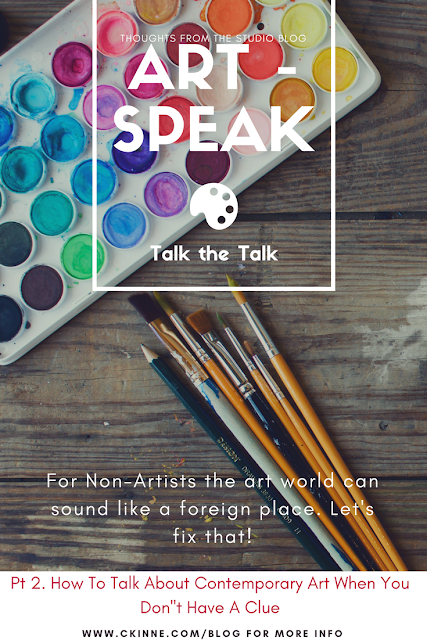Inspiration 104: Visual Culture
Originally Published: Aug 6, 2017
It was during my time in my graduate courses that I began to hear about the concept of visual culture. Historically in the art world there is often an elitist stigma of what constitutes something to be labeled as art: essentially traditionalist views of what art is. Hierarchal categories such as fine art, craft or kitsch are frequently mentioned. However, some of the most notable artists were the ones who abandoned the status-quo, were rejected from the formal salons, or transitioned from commercial design to a studio practice. Take the Impressionists for example, at first they were laughed right out of the Paris Salons and now are one of the most loved painting styles of all time. Or Andy Warhol who had a career in commercial advertising before he transitioned to the fine art field.
So when I first learned about visual culture it really resonated with me. Essentially the idea that art, in one form or another, is all around us and is a reflection upon our culture. In the United States, and I am sure many other industrialized nations around the world, we are bombarded everyday with visual imagery and design. From clothing to book covers, furniture, buildings and landscaping to TV and boxes on the shelf at the grocery store, to kids toys and cartoons, and magazine layouts- design and aesthetics are all around us. Notice the details of the chair you are sitting in, someone designed that. Think of iconic logos that are recognized all over the world (here's looking at you Apple, Coca-Cola, Mickey Mouse); an artist designed that. Where language has barriers, images can make connections across cultures.
Having grown up during the computer age, I can't help but notice how the concept of visual culture as only become more cemented in our world with that revolution. I am old enough to remember life before computers, but also young enough to have had computer class in elementary school. As technology improves we have only added additional means to display visual imagery every day. And the art world has taken notice. Art and design that once would have been snubbed by the art world is now a popular part of it... Graffiti anyone? This combined with the Post Modern support for appropriation, taking ideas from the past and recycling them to incorporate into new artworks breaks so many of the old concepts of what art is or could be. How liberating!
So if you are like me and easily smitten by good illustration, packaging, and design, next time you pick up that thing that has caught your eye think of the behind-the-scenes artists who just added to our collective visual culture.
Click here to return to my full website
It was during my time in my graduate courses that I began to hear about the concept of visual culture. Historically in the art world there is often an elitist stigma of what constitutes something to be labeled as art: essentially traditionalist views of what art is. Hierarchal categories such as fine art, craft or kitsch are frequently mentioned. However, some of the most notable artists were the ones who abandoned the status-quo, were rejected from the formal salons, or transitioned from commercial design to a studio practice. Take the Impressionists for example, at first they were laughed right out of the Paris Salons and now are one of the most loved painting styles of all time. Or Andy Warhol who had a career in commercial advertising before he transitioned to the fine art field.
So when I first learned about visual culture it really resonated with me. Essentially the idea that art, in one form or another, is all around us and is a reflection upon our culture. In the United States, and I am sure many other industrialized nations around the world, we are bombarded everyday with visual imagery and design. From clothing to book covers, furniture, buildings and landscaping to TV and boxes on the shelf at the grocery store, to kids toys and cartoons, and magazine layouts- design and aesthetics are all around us. Notice the details of the chair you are sitting in, someone designed that. Think of iconic logos that are recognized all over the world (here's looking at you Apple, Coca-Cola, Mickey Mouse); an artist designed that. Where language has barriers, images can make connections across cultures.
Having grown up during the computer age, I can't help but notice how the concept of visual culture as only become more cemented in our world with that revolution. I am old enough to remember life before computers, but also young enough to have had computer class in elementary school. As technology improves we have only added additional means to display visual imagery every day. And the art world has taken notice. Art and design that once would have been snubbed by the art world is now a popular part of it... Graffiti anyone? This combined with the Post Modern support for appropriation, taking ideas from the past and recycling them to incorporate into new artworks breaks so many of the old concepts of what art is or could be. How liberating!
So if you are like me and easily smitten by good illustration, packaging, and design, next time you pick up that thing that has caught your eye think of the behind-the-scenes artists who just added to our collective visual culture.
Click here to return to my full website


Comments
Post a Comment